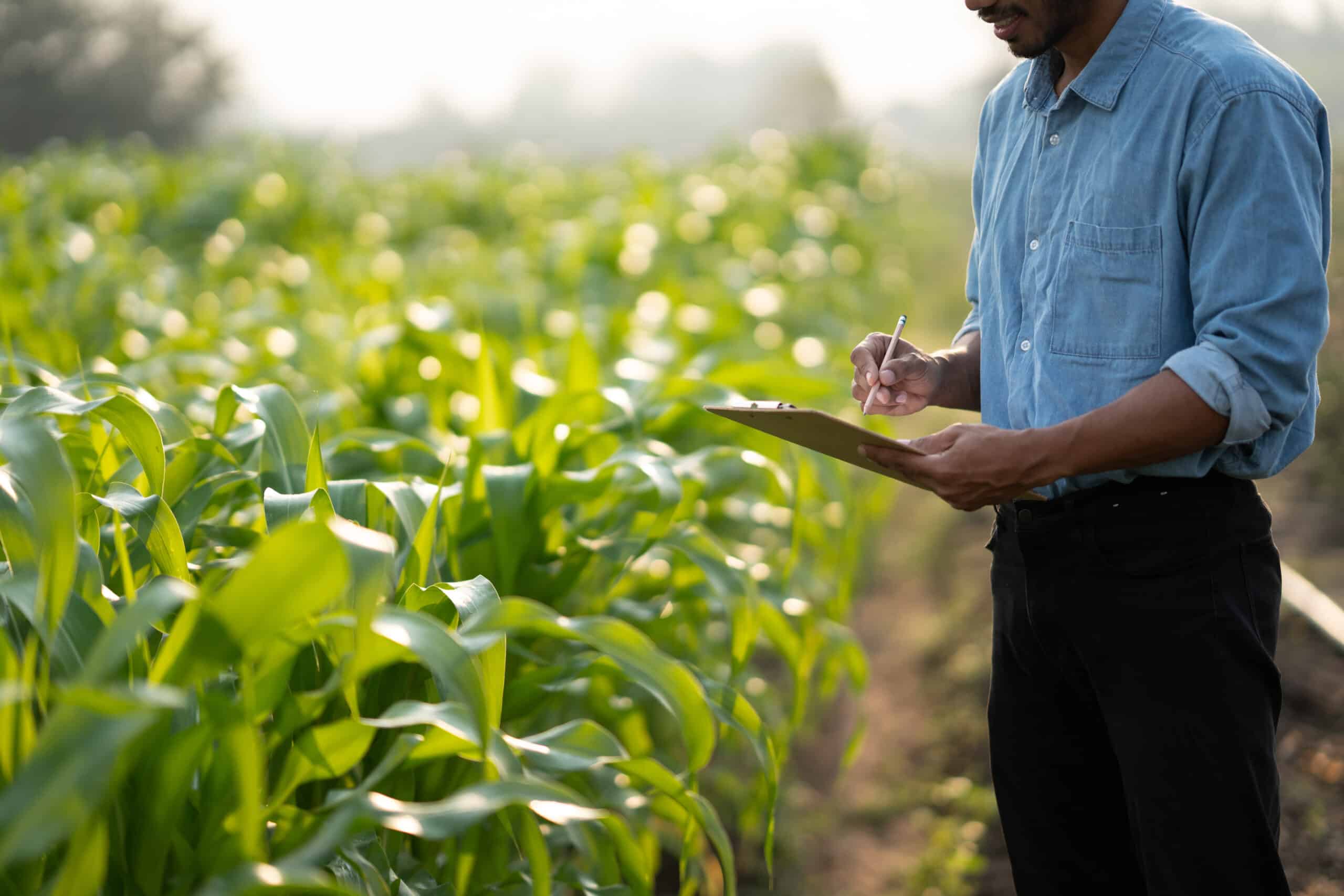In light of widespread environmental and ecological issues, and the urgent need to feed a growing global population, regenerative agricultural practices are more necessary than ever. Regenerative agriculture is a holistic farming approach that produces food while rebuilding soil health, enhancing biodiversity, and fostering ecological balance.
While strategies like agroforestry and precision agriculture are currently being used to alleviate some environmental pressures, microbial technology remains underutilised. This technology can improve soil health and enhance its ability to store carbon, helping farmers cope with climate change issues while reducing their environmental impact and conserving soil health and nutrition. In this article, our experts will discuss how microbial technology works, the benefits it offers to producers, and its broader role in promoting regenerative farming practices.
How does microbial technology enhance regenerative agriculture?
In contrast to traditional farming practices which prioritise yield and quality, regenerative agriculture places a greater focus on environmentally sustainable production by prioritising ecosystem conservation and the reduction of greenhouse gas emissions. Common regenerative practices include conservation tillage, cover cropping, agroforestry, crop rotation, and soil carbon sequestration.
Recent advances in microbial technology have sparked considerable interest in its potential to enhance regenerative agriculture practices. For instance, progress in nanotechnology and synthetic biology have enabled the cultivation of more robust and efficacious microbial strains. Additionally, enhancement of fermentation techniques has bolstered the possibility of continuous production of microbial biofertilisers and biopesticides, at a larger scale, rendering them more economically feasible and accessible to farmers.
The primary benefits of microbial technology for regenerative agriculture include soil restoration, enhanced crop production, and sustainable pest management. Introducing specific microorganisms into the soil can stimulate the natural processes that optimise soil structure and enhance nutrient cycling, resulting in increased soil fertility and a more balanced soil ecosystem. The application of certain beneficial microorganisms to the soil can improve crop production by increasing nutrient availability, promoting plant growth and stress tolerance, leading to higher yields and better crop quality. Beneficial microorganisms can also target and suppress pests, reducing reliance on chemical pesticides. These microbes can produce natural biopesticides which enhance plant defences, and disrupt pest lifecycles, and in doing so, help foster a healthier, more sustainable ecosystem.
Microbial technologies that benefit regenerative agriculture
Microbial technologies include:
Microbial inoculants introduce beneficial microorganisms to soil or plants to enhance nutrient availability, suppress pathogens, and promote plant growth.
Biofertilisers utilise microbial agents to fix nitrogen, solubilise phosphorus or potassium, and enhance nutrient uptake by plants, improving soil fertility and crop productivity.
Biopesticides use microbial agents such as bacteria, fungi, and viruses to control pests and diseases, offering organic alternatives to chemical pesticides.
Biostimulants contain microbial-based products that stimulate plant growth, improve abiotic stress tolerance, and enhance nutrient uptake, contributing to overall plant health and resilience.
Microbial amendments such as organic materials like compost and manure, which harbour diverse microbial organisms that improve soil structure, fertility, and biological activity.
Nanotechnology-based microbial products utilise nanomaterials to enhance the delivery and efficacy of microbial agents, improving their performance in soil and plant environments.
Genetically engineered microbes with genomes manipulated to enhance specific traits such as nutrient cycling, pest resistance, and stress tolerance.
Economic benefits of adopting microbial technologies
Besides their environmental benefits, microbial technologies can also result in commercial gains for manufacturers and growers. One significant economic benefit is reduced input costs. Chemical fertilisers, such as nitrogen fertilisers, are produced through energy-intensive industrial processes, driving up input costs and resulting in higher prices for produce. Microbial fertilisers offer more affordable alternatives, lowering the cost of inputs for farmers.
Improved crop quality and yields are another advantage. By enhancing soil health and nutrient availability, microbial technologies can improve crop quality and yields. Healthier soil provides more nourishment for plants which leads to more abundant harvests and increased profits for farmers.
Additionally, organic produce grown with microbial technology often commands premium prices which benefits farmers financially.
Furthermore, farmers using microbial technology may qualify for carbon credit programs. In the EU, for instance, carbon farming and storage programs provide supplemental income for farmers as a way to incentivise sustainable agricultural practices.
Challenges
Hurdles currently limiting the full exploitation of microbial technology for regenerative agriculture include the complexity of soil microbiomes, the establishment and stability of introduced microbes, and the harsh environmental factors they face. Soil microbiomes are diverse and complex, making it challenging to understand their interactions and specific needs for different crops and soils. Introduced microbes also face competition from established native soil microbes, and harsh environmental factors like UV radiation and contaminants can affect their survival and efficacy. Ensuring that beneficial microbes can thrive and be productive is a critical challenge.
Nevertheless, advances in nanotechnology, machine learning, and synthetic biology can help overcome some of these hurdles. Nanoencapsulation of microbial agents can protect against harsh conditions and make delivery more targeted, improving their efficacy. Machine learning can predict the best strains for mitigating specific stresses on soil and crops, and synthetic biology can be used to design microbial consortia that work synergistically to promote soil health, boost crop resilience, and optimise nutrient cycling.
Looking ahead
Microbial technology can play a substantial role in regenerative agriculture. While understanding soil microbiomes and ensuring microbial establishment remain hurdles to full exploitation of this technology, biotechnological applications of innovations in fields such as nanotechnology, machine learning, and synthetic biology offer promising solutions. Collectively, these can foster resilient agricultural systems that restore soil health, improve crop productivity, and mitigate environmental impacts.
At Farrelly Mitchell, our food and agribusiness consultants possess extensive expertise in regenerative farming practices. We help clients improve the sustainability of their operations by providing critical insights into regenerative agriculture, agroforestry, the circular economy, and biodiversity conservation. Our regenerative agriculture consultants are up to date with the latest agtech and foodtech innovations and can deliver actionable recommendations on the ESG impact and financial feasibility, and commercial viability of regenerative agriculture initiatives.
To learn more about our services and discover how you can transform your operations for the better, contact our team today.














